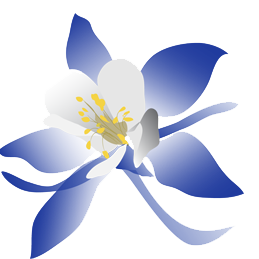 Colorado Wildflowers: A Field Guide
Colorado Wildflowers: A Field Guide
 Colorado Wildflowers: A Field Guide
Colorado Wildflowers: A Field Guide
References
Ackerfield, J. 2022. Flora of Colorado, Second Edition. Bot. Misc. 60. BRIT Press, Fort Worth Botanic Garden | Botanical Research Institute of Texas, U.S.A.
The most current and thorough flora for Colorado, this is a dichotomous key supplemented with plant descriptions, photographs and range maps. An essential resource if you are serious about learning the plants of Colorado.
Barnett, Don and Donnie Barnett. 2016. The Cactus of Colorado. Colorado Cactus and Succulent Society.
A comprehensive treatment of the Cactus flora of Colorado. Includes a key, detailed descriptions, maps and photographs.
Barnett, Don and Donnie Barnett. 2022. Penstemon of Southeastern Colorado. Ethical Desert, Pueblo, Colorado.
Includes a key, detailed descriptions, maps and photographs of Penstemon species of eastern Colorado, especially the southeast portion of the state.
BONAP maintains the North America Plant Atlas and is a good source for county level range maps. Kartesz, J.T., The Biota of North America Program (BONAP). 2015. North American Plant Atlas. (http://bonap.net/napa). Chapel Hill, N.C. [maps generated from Kartesz, J.T. 2015. Floristic Synthesis of North America, Version 1.0. Biota of North America Program (BONAP).
Culver, Denise and Joanna Lemly. Field Guide to Colorado's Wetland Plants. Colorado Natural Heritage Program, Colorado State University.
If your feet are getting wet, this field guide might help you. Extensive coverage of wetland plants with photographs, descriptions and maps. Also available as a pocket guide for carrying in the field.
Flora of North America
An online key to the plants of North America. Flora of North America (FNA) is a good place to go if you aren't sure you keyed something correctly in Ackerfield's Flora of Colorado. The key is large, covering the entire continent, and does not contain photographs. FNA is a good resource for confirming identifications.
Flora ID is a database plant identification tool developed by Bruce Barnes and now managed by a non-profit organization. Flora ID is very useful when you get stuck in a dichotomous key because you don't have a fruit or other required plant part. Available as an Android app (no iPhone app) or for home computers. The computer version is easier to navigate, but obviously less portable. A Flora ID version specific to Colorado is available.
iNaturalist is a valuable resource for plant identification. The iNaturalist phone app (it's free!) has the best photo recognition available for flowers...by far. We tested 5 of the most widely used photo recognition apps against a set of random flower images, and iNaturalist leads the field by a wide margin. Using the app also contributes data to the iNaturalist project which is valuable for monitoring where and when plants are found. iNaturalist is a not for profit joint initiative by the California Academy of Sciences and the National Geographic Society.
Kittel, Gwen. Willows (Salix) of Colorado: Their Ecology and Identification. 2023.
An excellent key to all 40 Colorado willow species. Separate keys for vegetative samples and plants with catkins makes the key useful throughout the year. Species descriptions, range maps and photographs. Willows can be challenging to identify, and Kittel's book is an essential tool.
Smith, Scott F. Those Elusive Native Orchids of Colorado. 2012.
A thorough treatment of Orchidaceae, one of the most interesting plant families in Colorado.
SEINet
The Southwestern Environmental Information Network (SEINet) is a vast database combining herbarium records from across the region in a single resource. The site contains a searchable map interface that maps verified occurrences of each species with records dating back more than a century. There are thousands of photographs of herbarium specimens and plants in the field, as well as detailed descriptions of each species.
Southwest Colorado Wildflowers web page by Al and Betty Schneider is an excellent resource and the inspiration for this website. The Schneiders have beautiful photographs and extensive descriptions for each plant. Their website focuses on species found in SW Colorado but many of those species are found in other parts of the state, as well.
Weber, William A. and Ronald C. Wittmann. 2001. Colorado Flora: Eastern Slope, 3rd edition.
Weber's keys were the primary references for Colorado flora before Ackerfield. Weber's flora are no longer current but are a useful resource as a companion to Ackerfield.
Wingate, Janet. Sedges of Colorado.
Sedges are challenging to identify, but Wingate's key is a great aid. Dichotomous key with thorough descriptions and beautiful illustrations. Because sedges can be difficult, I often key a plant using Wingate and again using Ackerfield to see if I get the same result.